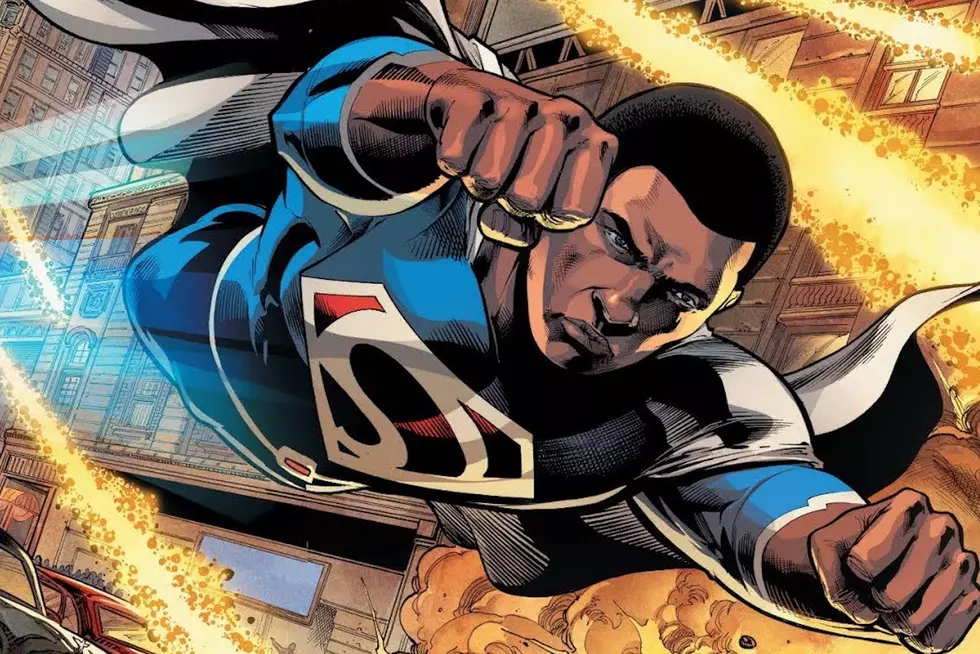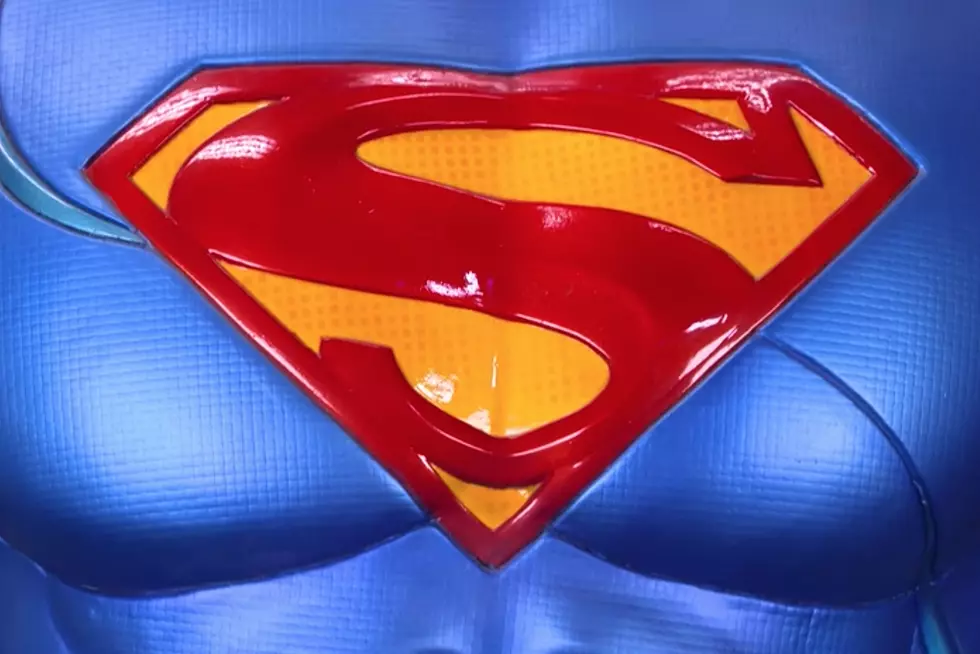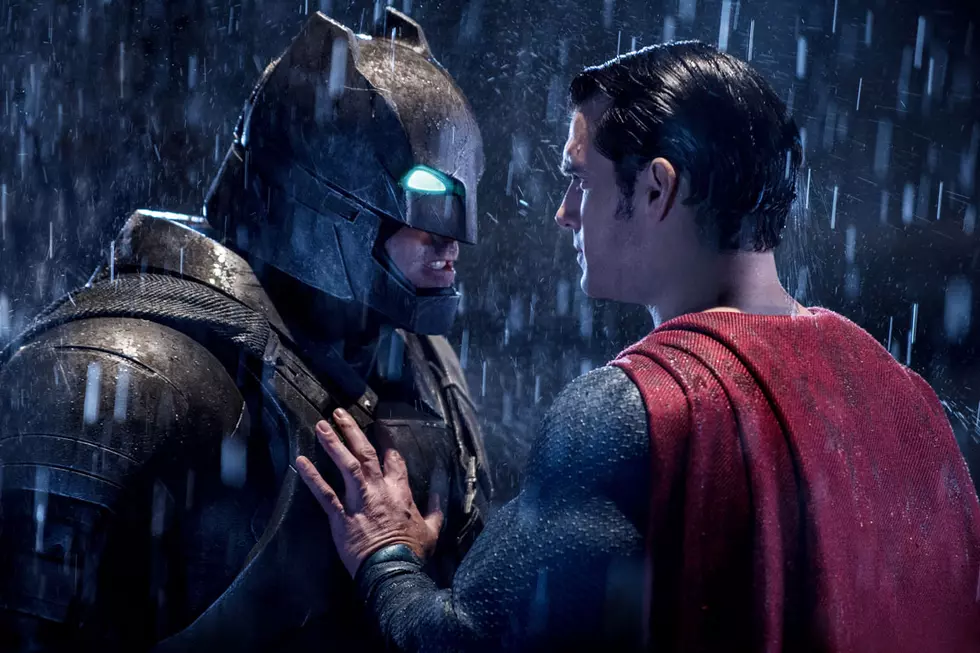
Ask Chris #325: Operation Justice Incarnate
Q: Superman just reintroduced Justice Incarnate. Can this team make sense outside of The Multiversity? — @EfremOshinsky
A: One of the great things about superhero comics is that over the past eight decades, it's been twisted into so many different forms that there aren't a lot of concepts that don't at least do something interesting when you remove them from their original contexts. That's half the fun of the genre, right? The idea that you can take a character like Batman and make him work in gritty street-level crime stories or cosmic Justice League sagas and have it all work with the same core ideas.
That said, I'll agree that Justice Incarnate --- aka Operation Justice Incarnate, aka Justice League Incarnate, a pretty confusing string of names for a team that's only ever appeared in three issues --- is a bit of a special case.
Before we go any further, there's a bit of background that we need to get through. Originally introduced by Grant Morrison and Ivan Reis as Operation: Justice Incarnate in the pages of Multiversity #2, the big idea here was that Justice Incarnate were the greatest heroes from different dimensions were brought together to face down threats that attacked the very multiverse itself. In Multiversity, that threat came in the form of the Gentry, an army of monsters that descended into the Multiverse from a higher plane of reality, using comic books to invade and destroy entire swaths of alternate dimensions.
You know. Superhero stuff.
With Multiversity ending with the reveal that there was some unstoppable super-boss behind the Gentry, the heroes who had been brought together to fight them off --- led by Calvin Ellis, the Super-President of Earth-23 --- decided to stay together to prepare for the inevitable return of the Empty Hand. But that doesn't mean that it's the only threat they can deal with.
Now for the second piece of context: Ever since Rebirth, Superman has been buck wild.
Even moving past the fact that the Superman and Lois Lane that we have now are actually the ones from two reboots ago who came back from being retconned by some truly bizarre machinations involving Convergence, this is a book that's given us Superman throwing down with Frankenstein and a tribute to the late Darwyn Cooke that saw Superman and his son taking on New Frontier's Dinosaur Island.
With all that in place, it's not really surprising that Peter J. Tomasi, Patrick Gleason, and Ivan Reis would bring back Justice Incarnate. Or at least, it wouldn't be if it wasn't such a rarity for stuff like that to be followed up on, especially when it comes to comics involving Grant Morrison.
I've always been a huge Morrison fan, and the one thing that's really frustrated me as a reader is that he introduces so much great stuff that no one else ever bothers to pick up on. It's something I noticed going as far back as JLA, where I wondered why no one did another story with the Ultramarine Corps, or brought back Solaris the Tyrant Sun from the pages of DC One Million? All of that stuff seemed to be the exclusive domain of Grant Morrison and his collaborators. When it did come back --- the Ultramarines in JLA Classified and Solaris in All Star Superman --- it was always Morrison at the helm, and I always wondered why.
A shared universe, after all, is built on the idea of sharing those ideas, bringing them back and putting them into new contexts. Everything that a creative team introduces has the potential to be a baton that a future team can pick up, and when you see a good idea that nobody else bothers to do anything with --- or that's retconned away before it has the chance to do anything --- it sticks out.
I should probably note that this isn't exclusively a thing with Morrison, either. If you dig deep into the second- and third-tier comics that were on the shelves ten or twenty years ago, you'll see plenty of stuff happening that feels like it would've come up again. Dan Curtis Johnson and JH Williams III's Chase is full of really interesting takes, like a post-capitalist take on the Soviet Union's Rocket Reds, that only seem to exist in that book, even if the main character and her (extremely interesting) story were eventually followed up on almost a decade later. Same goes for a lot of the stuff in Hourman, or for characters like Nyssa Raatko, who were just untidily disposed of before they could reach their potential.
So yeah, it happens all the time, but what makes Morrison's stuff stick out is that it tends to happen in much more high-profile books. Every single comic that DC published in November of 1998 was about Solaris in one way or another, and I can count its appearances since on one hand and still have enough fingers left to write about why he'd make a much better movie villain than Darkseid.
Part of this, I believe, has to do with timing. There's always going to be an element of nostalgia to comics, with creators wanting to bring things back that they've been excited about since they were readers. That's why you saw the '70s Legion of Super-Heroes being brought back in 2006 instead of further adventures for Jake Jordan, the Manhattan Guardian --- and it's also why you're seeing creators like Steve Orlando digging back into Morrison and other late '90s DC stuff now.
But I think there's also an element of respect to it, too. Reading through Multiversity --- heck, reading through any of the other stuff that Morrison has written in almost 30 years at DC --- and it's pretty clear that he's got plans for a lot of this stuff. It's easy to think that while a character like Solaris was written as having a long and complicated future as a villain, Morrison might want to use it somewhere else, and writers who would want to use it might end up avoiding it because of that. Then again, as much as it might be weird to have the Empty Hand show up in Green Lantern and get trounced by Hal Jordan, this is the same universe that's about to show us Batman and the Flash investigating some Watchmen paraphernalia, so, y'know. Grain of salt and all that.
All of which brings us back around to Justice League Incarnate.
Even if they're created for a singular purpose --- protecting the Multiverse from the Empty Hand --- it's easy to extrapolate that purpose to a wider mission; protecting the Multiverse, full stop. That, in turn, gives them something to do that can keep them fresh in our minds as an existing entity while we wait however long it's going to be for them to actually get around to Multiversity 2: Still Multi.
Ask Chris art by Erica Henderson. If you’ve got a question you’d like to see Chris tackle in a future column, just send it to @theisb on Twitter with the hashtag #AskChris.
More From ComicsAlliance









